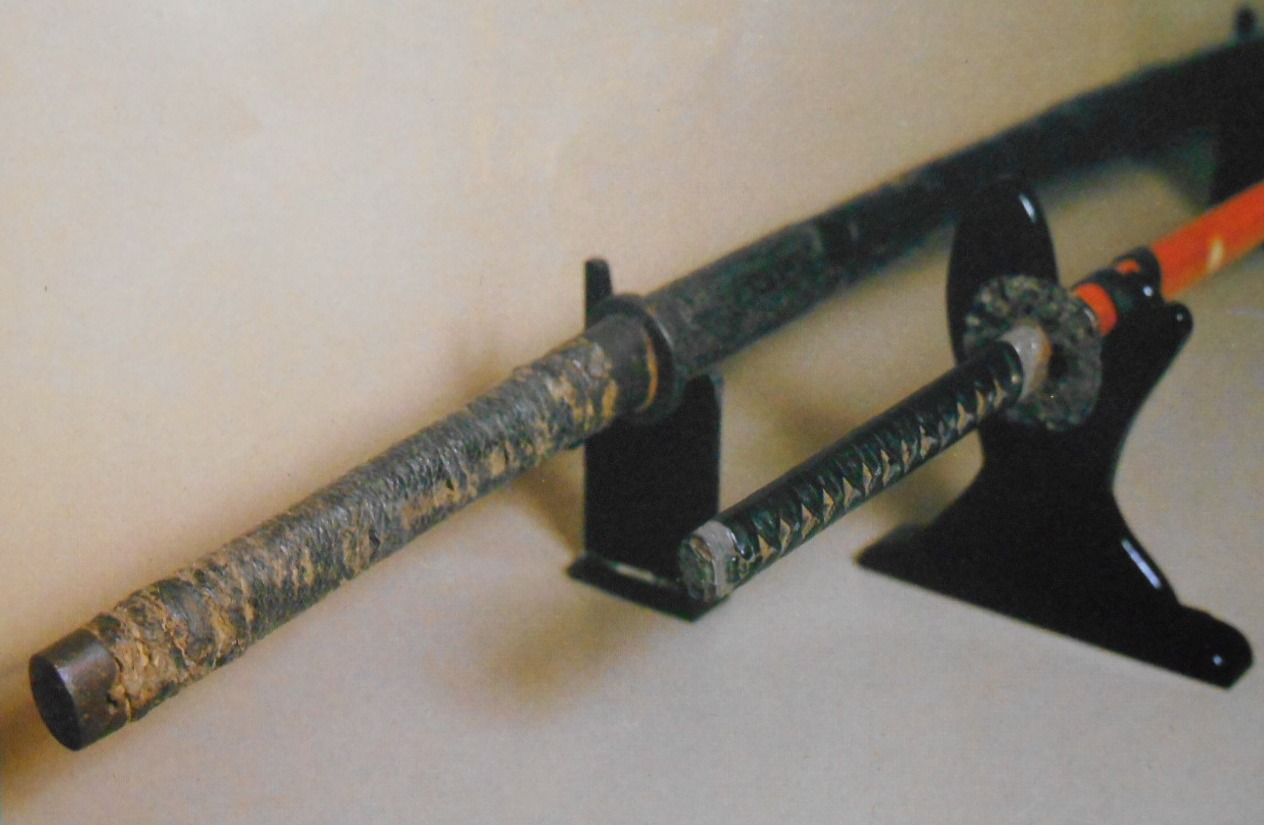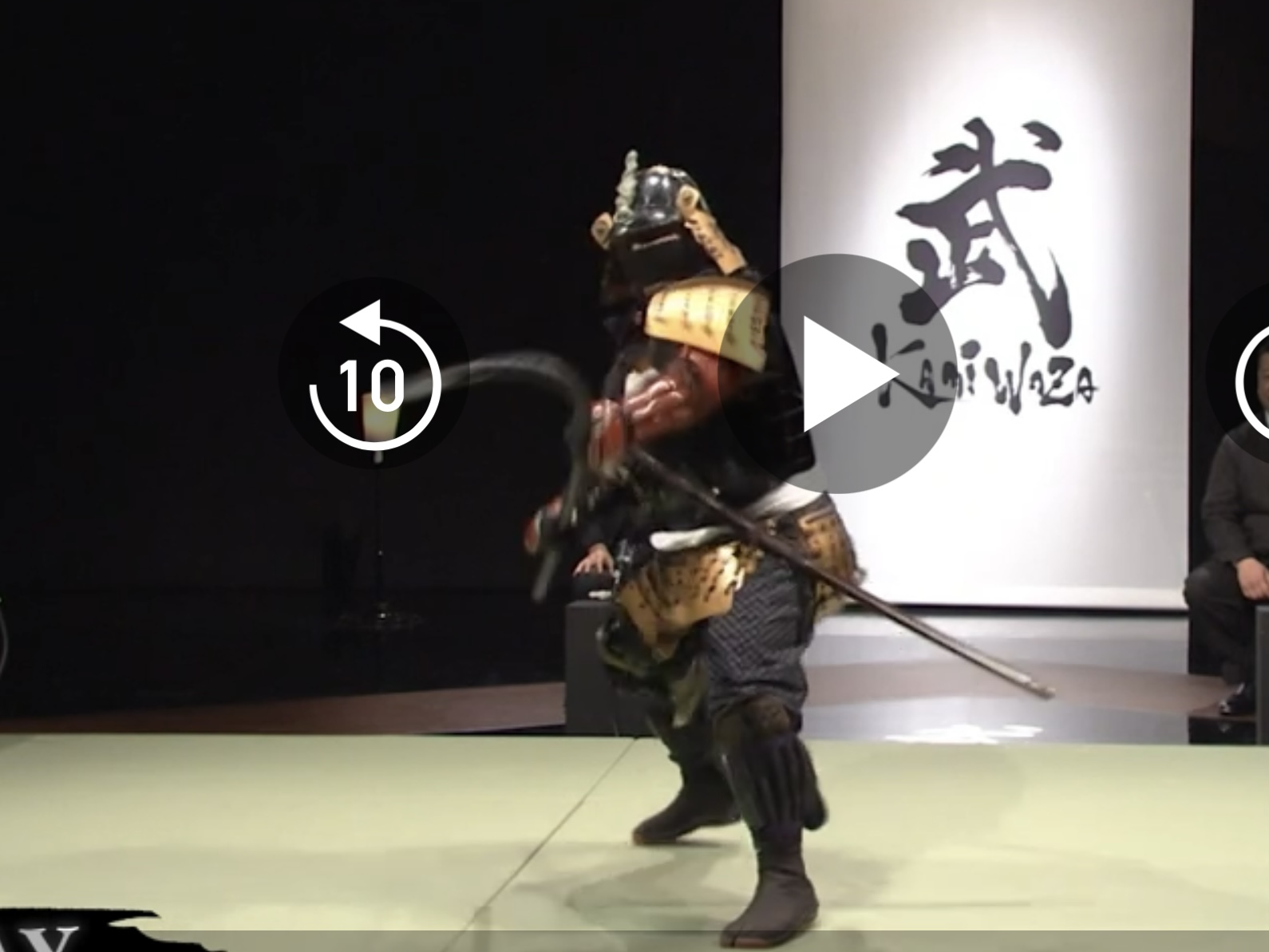There are plenty of questions (and, indeed, legends) surrounding Musashi’s life – where was he born? What, if anything, did he study as a child? Did he fight in the Battle of Sekigahara? Why is there no real record of Sasaki Kojiro? – to name just a few. However, in the fiction of the Edo period, he had another career – slayer of monstrous beasts.
These stories are clearly fictional (unlike his relationship with the monk Takuan, for example, which is believable although untrue); they fall into a genre which sees famous figures from history triumphing over a variety of monsters, some supernatural, some gigantic versions of actual animals. Those familiar with the prints of Utagawa Kuniyoshi will, no doubt, have seen many of these.
The heavily forested mountains that cover much of Japan were, from earliest times, seen as places of mystery, the abode of spirits as well as being home to dangerous wild animals and lawless elements of society. People did not wander through them lightly, and they formed a suitable realm of the unknown for all manner of strange and wonderful things to occur. Japanese folklore is rich in supernatural entities, and to this day there is a tacit respect for old customs that touch on this. Evidently, it was fertile ground for stories that stretch belief.
There might be more to it than that, however. Censorship in Edo period Japan (when these prints were being made) was strong, and overt criticism of the government could bring heavy punishment. Print makers and playwrights would get round this by changing the names of historical figures, so as not to fall foul of the censorship laws – many prints have names that are slightly changed from their historical models, and there are some notable prints that are recognized as overt criticisms of current events in a historical guise (and you only have to look at the recent spat over the use of film of Reagan criticising tariffs to see that governments can still be sensitive to this kind of thing).
But I digress…Musashi has appeared battling such creatures in a number of stories, and even a cursory glance online brings up many examples. Unless otherwise noted, these prints are from the Boston Museum of Fine Art.
The ghost of Himeji Castle
Miyamoto Musashi and Princess Osakabe
From Claremont Colleges Digital Library.
Artist: Chikanobu Yoshu 1886
Story and background
This story seems to have originated in a novel of the late 19th century, and a similar version appeared in a serialised lecture titled Miyamoto Musashi, printed in the Osaka Mainichi Shinbun (Osaka Daily News) in 1915. A version of this is now seen as folklore in the Himeji area, and it’s this that you are most likely to come across in English (if you come across it at all):
Musashi (under an alias) is working as a guard at Himeji Castle, where there have been reports of strange lights and noises coming from one of the towers. He volunteers to investigate the happenings. He climbs the tower and on the third floor is suddenly assailed by roaring flames and an unearthly cry. Undaunted, he places his hand on his sword hilt and advances – the flames and sound disappears. He climbs to the next floor, and the same thing happens. Climbing to the top floor, the guardian spirit of the the tower - a princess, no less – appears and thanks him for driving away the malicious spirit that was haunting the tower. She rewards him by presenting him with a famous sword. Everyone is happy and Musashi has saved the day!
The original was a little more involved, and has a sting in the tale. Rather than a grateful protector guardian, the spirit at the top is a fox spirit who has set the whole thing up so Musashi will be caught with the stolen sword and executed. Musashi manages to get out of the trap and eventually kills the fox spirit after another attempt on his life.
Here we are clearly into the world of legend, so let’s see if we can glean something useful from it.
For the more practically minded, this could be seen as an illustration of various characteristics associated with accomplished martial artists – calmness, presence of mind, indomitable spirit, and also saya no uchi, which is often explained as the ability to win without drawing the sword – largely through the foregoing abilities. Note how Musashi was able to defeat the spirit without drawing his sword.
As you might expect, a country rich in esoteric and supernatural traditions might well have a little more to say on the matter. Many traditions of bugei touch on this area, and some respected voices have spoken further on it. Otake Risuke, for example, recounts an anecdote relating to exorcism based on the teachings of Tenshin Shoden Katori Ryu. Perhaps, the practice of an art that is based on ‘divine’ or ‘true’ principles the spiritual strength of the bugeisha is of the same nature, to some degree, as that of the supernatural, and thus can be a potent protection against supernatural phenomena.
Tengu
 |
| This print (and most of the others) is by Utagawa Kuniyoshi |
Tengu have a long connection with swordsmanship, not merely in legend and literature, but likely because of the connections with esoteric religious practices connected with yamabushi and their martial traditions (and hence wandering swordsmen), and in this connection, they are often presented as teachers.
However, they also have a negative reputation - in Buddhism, for example, they are often seen as beings that seek to lead people away from the true path. This tengu is obviously not the teacher type.
 |
| Utagawa Hiroshige |
 |
| Tsukioka Yoshitoshi |
Interestingly, I chanced across a similar (albeit far less dynamic) print on the theme, but with a different swordsman – Yagyu Jubei.
 |
| artist unknown |
Wild Beasts
After I had written this post, I found out that the Edo period novel (by Hiraga Baisetsu) that most of the animal encounters below (and, indeed, the tengu one above) are drawn from is now available in translation by Eric Shahan. They also appear in a variety of stage plays and stories presented to audiences by professional storytellers. Novels, ukiyo-e and theatre were all linked, so I am not sure if the novel collected stories which were already going around, or if it was the novel from which everyone else drew their inspiration. If you find this kind of thing interesting I suggest you take a look. Below is a link to his Amazon page:
Miyamoto Musashi : Two Swords: An Illustrated Tale of Bravery
This illustration is also by Kuniyoshi
At one time, I thought of the dangers of wild animals in Japan to be minimal. Yes, there are poisonous snakes, and you wouldn’t want to get bitten by a monkey or get on the wrong end of a wild boar, but by and large, you would have to go out of your way to look for trouble (watch out for the “murder hornets”, too.)
But not so – there have been a growing number of bear attacks, mostly in the northern half of Honshu, including 13 deaths so far this year (out of more than 200 reported attacks), so it would be wise not to be complacent.
Musashi was not fighting bears, but there are a few prints that depict him battling creatures that are more or less natural.
Wolves
 |
| Utagawa Kuniyoshi |
This triptych depicts a scene from the play Kan'ei Miyamoto Musashi Den. Musashi is laying about him in the midst of a pack of wolves - largely extinct by the time the print was made, but perfect as a foil for someone wielding two swords. Sitting watching him is another famous bugeisha, Sekiguchi Yataro (1640-1729), whose school survives to this day. They were near contemporaries (Musashi died in 1645), and Sekiguchi was a popular character in stories that bore little relation to his actual life.
Bats? No, flying squirrels…kind of
You would be forgiven for thinking Musashi was fighting a giant bat, but it is actually a nobusuma - possibly a giant flying squirrel (the name means something like ‘wild blanket’) and some pictures depict it as such. Other law says that when bats reach a certain age, they transform into one of these, so perhaps it is a bat after all, but a supercharged one.
 |
| Tsukioka Yoshitoshi |
Giant lizards
Utagawa Kuniyoshi Kinchoro Yoshitora
Sharks are often depicted as crocodile-like creatures in Japanese prints – the scales certainly make for a more detailed motif – but these are meant to be mountain dwelling creatures.
A whale
 |
| Utagawa Kuniyoshi |







































